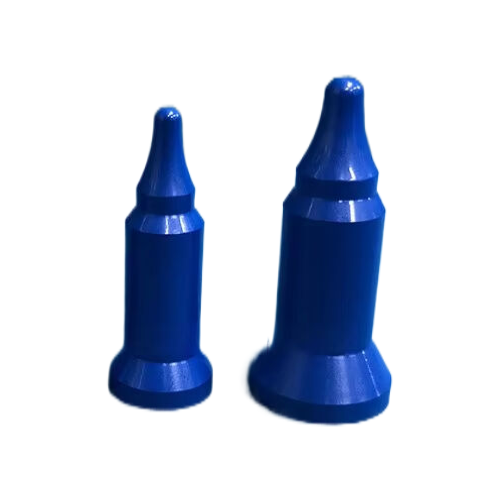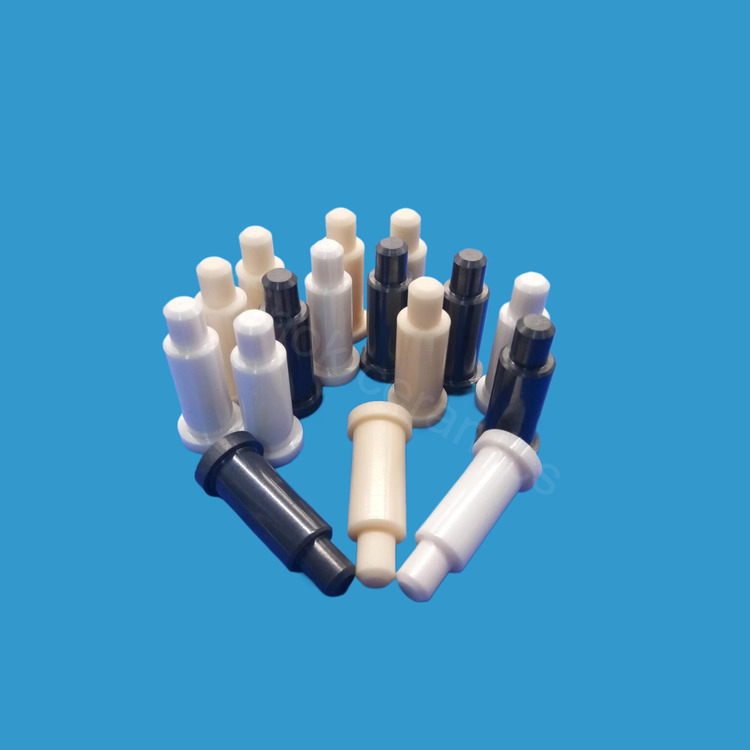How to select and calculate the size of ceramic dowel pins
I. What is a ceramic dowel pin?
Ceramic dowel pins are commonly used fasteners in mechanical processing, mainly for positioning and fastening mechanical components with high precision requirements as well as clamping workpieces. It is usually composed of a cylindrical rod body and a spherical conical surface. By inserting positioning holes, the workpiece to be processed is fixed at a specific position to achieve precision processing.

Zirconia dowel pins, with their unique properties, have become an important choice in the field of industrial manufacturing. Its characteristics such as high strength, high hardness, high temperature resistance, corrosion resistance, low coefficient of thermal expansion and biocompatibility give it obvious advantages in applications in different fields.
Ii. Key Points for Selecting the Size of Ceramic Dowel Pins
Hole size
The tolerance between the diameter of the ceramic positioning pin rod and the axis of the part positioning hole should be controlled within an appropriate range to ensure that the positional accuracy of the workpiece does not exceed the specified range.
Depth of the hole
The length of the ceramic dowel pin should be suitable for the depth of the part.
Pin length
The length of the pin should be greater than the vertical depth of the positioning hole of the equipment. The purpose is to prevent the ceramic positioning pin from being too short when the surface of the positioning hole of the equipment contacts the positioning surface of the workpiece, which may cause insufficient insertion and thus affect the accuracy.

Material of the pin
The material used to make ceramic dowel pins should have wear-resistant and corrosion-resistant properties.
Iii. Method for Calculating the Size of Ceramic Dowel Pins
When choosing ceramic dowel pins, factors such as the size of the part to be positioned, the diameter and depth of the positioning hole to be inserted, and the positioning method need to be taken into consideration. When calculating the size of ceramic dowel pins, the following methods can be adopted:
The size of the pin is determined by the flatness and tolerance of the positioning surface.
The diameter and depth of the pin should be 1 to 2mm larger than those of the positioning hole respectively.
The length of the ceramic dowel pin rod is equal to the depth of the positioning hole of the part, plus the length of the pin rod extending out of the part surface, plus a certain length of safety margin.
Liii. Depending on the different positioning methods, the lengths and diameters of the ceramic dowel pins for the top pin type, ball head type and flat head type can be calculated respectively.
Iv. Measurement Methods for Ceramic dowel pins
The common measurement methods for ceramic dowel pins mainly include the following:
1.Diameter measurement method: Use precise measuring tools such as micrometers and vernier calipers to measure the distance from center to center, thereby obtaining the diameter of the ceramic dowel pin.
2. Length measurement method: Use precise measuring tools such as micrometers and vernier calipers to measure the length of the ceramic dowel pin, thereby obtaining the size of the ceramic dowel pin.
3. Optical measurement method: By using measurement tools such as optical projectors and image measuring instruments, the shape and size of the ceramic dowel pins are visualized through optical imaging.
V. Determination of Standard Dimensions
As a commonly used mechanical component, the size standards of ceramic dowel pins have also been uniformly stipulated accordingly. Commonly used international standards include the "General Ceramic Positioning Pin and Positioning Sleeve System" formulated by ISO and the GB standard of the American national standard ANSI, etc.
When choosing standard ceramic dowel pins, the following points should be noted:
1. Working environment: According to the requirements of the actual working environment, select the appropriate standard size to ensure the function and service life of the ceramic dowel pins.
2. Matching parts: According to the size of the parts to be positioned, select the appropriate standard ceramic dowel pins to ensure a good match between the ceramic dowel pins and the parts they are matched with.
3. Production Requirements: Based on your own production needs, select the standard dimensions that meet both quality and production efficiency requirements.
Vi. Precautions
The selection and calculation of ceramic dowel pins should be determined based on specific circumstances to ensure that the size of the selected ceramic dowel pins is suitable for the application environment and requirements.
When using ceramic dowel pins, attention should be paid to their material, surface finish, tolerance and other requirements to ensure that they do not have adverse effects on the accuracy and quality of mechanical processing.
When clamping workpieces with ceramic dowel pins, the design requirements must be strictly followed to avoid rework and damage to the workpieces.
In conclusion, choosing the appropriate size of ceramic dowel pins is crucial to the accuracy of workpiece processing. Through reasonable calculation and selection, the accuracy and quality of processing can be significantly improved.